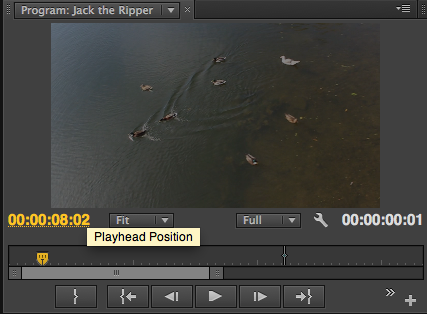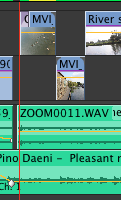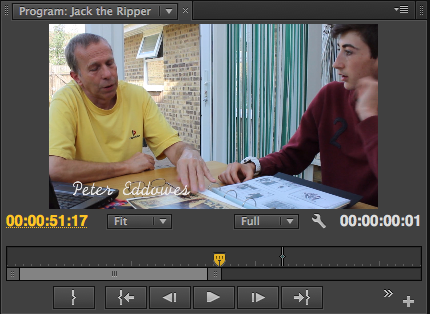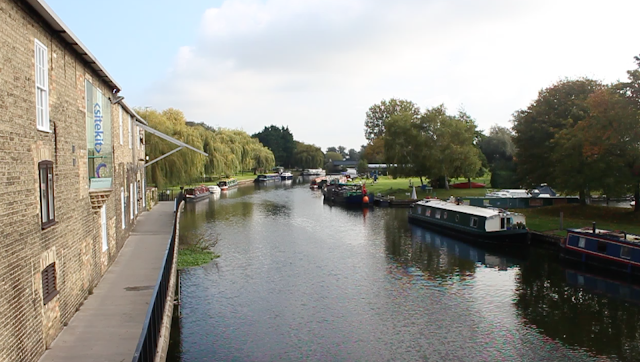This is the opening shot of post production and in this shot I added the sound of the train as it gave me options of what mood to open to as I chose a loud, suden train sound it gave the opening to the documentary an edgy and dangerous feel to it.
 This is the start of a voice over as it helps the audience gets an idea of what they are watching along with the voice over there is background music to help set the mood for the film.
This is the start of a voice over as it helps the audience gets an idea of what they are watching along with the voice over there is background music to help set the mood for the film.
 At this part of my documentary sequence the interview begins with the name of the interviewee popping up at the bottom so the audience know who's talking. I got his name to fade it and fade which adds to the ghostly feel of the sequence along side the sound effect underneath the interview speech. The sound effects is a spooky exhaling effect and adds thriller theme to the documentary. As well as the cut aways of the police newspaper at the end of the shot, the cut aways was place their specifically so that you cant't see the jump cut between shots and looks like the interview is made up of one shot. Also it helps the audience to get more of an idea of what Peter is talking about and see visually what he is talking about, this give it a brilliant effect for the audience.
At this part of my documentary sequence the interview begins with the name of the interviewee popping up at the bottom so the audience know who's talking. I got his name to fade it and fade which adds to the ghostly feel of the sequence along side the sound effect underneath the interview speech. The sound effects is a spooky exhaling effect and adds thriller theme to the documentary. As well as the cut aways of the police newspaper at the end of the shot, the cut aways was place their specifically so that you cant't see the jump cut between shots and looks like the interview is made up of one shot. Also it helps the audience to get more of an idea of what Peter is talking about and see visually what he is talking about, this give it a brilliant effect for the audience.
Here are some examples of post production techniques:
This is a shot of my editing in progress, as you can see there is alot of clips either put randomly or clumps together, these are the cut away that I used, by looking at this you can see how much detailed editing it takes and how much time it take to make it look how you want it, there are alot of differet eliments involved.

Here is a shot of how I have set the footage films in promier pro, I am name the shots so it is easier to find when I need them.

As you can see I used many different sounds to create my docuementary, I used this many to help create emotion and genre within the film.
This is a screenshot of how I arranged the sound in the editing process, I also specicically editing the sound to fade in, fade out and to be adjusted.
Here is an example of my editing desicion, these are two shots that are very similar to where they are filmed.
The shot below is from a pedestrians point of view and is much lower angle then from the other shot. This shots lighting is also dimmer and just generally a dark image so I decided to use the other shot of the river. As it is much brighter and warmer to view, is a higher angle so you see more scenary. The shot its self is actually a paning shot of the river unlike the one below.
This is the shot I decided to use in the documentary. You can see just my having the images to gether that the one below is a more porfessional and styled choice. It also makes the view feel more of a spectator which is a good start to a and this documentary.
































